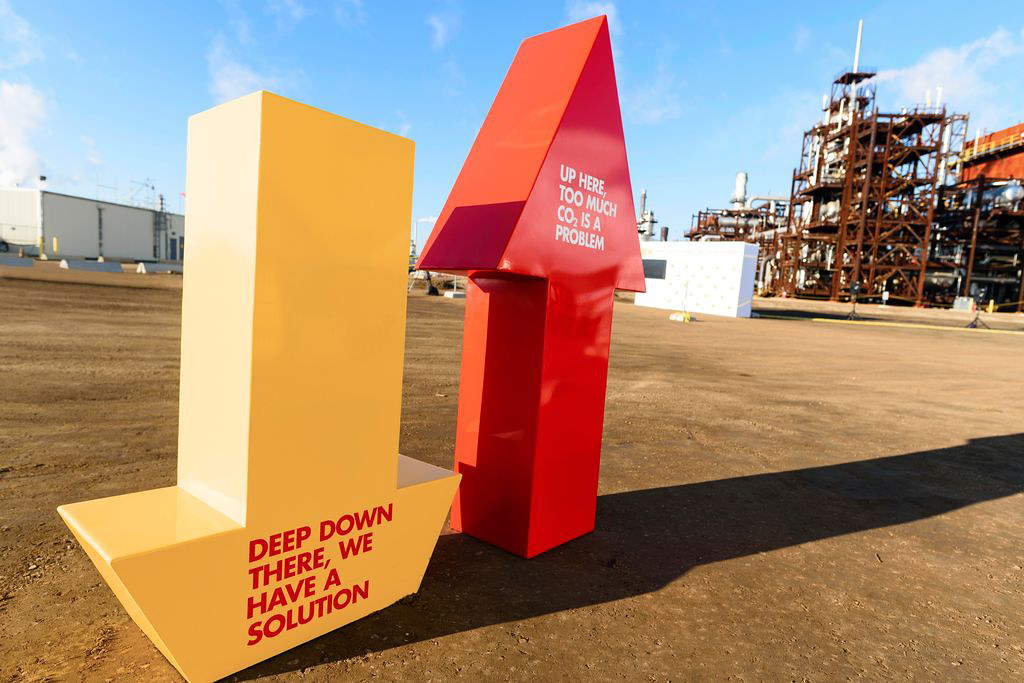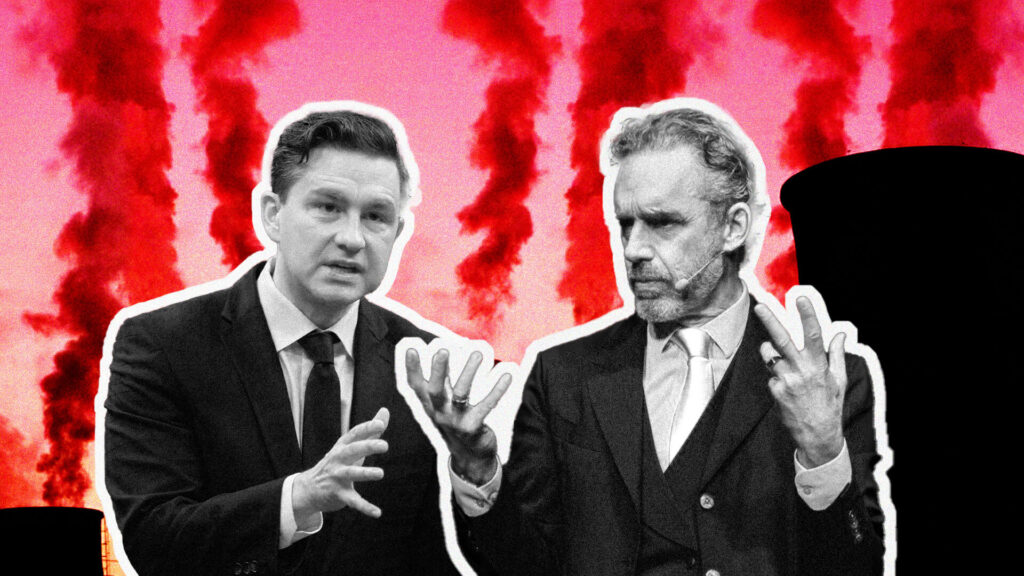Last February, ExxonMobil announced it would further expand its only active carbon capture and storage (CCS) operation in the United States, located at a gas processing facility in LaBarge, Wyoming. Shute Creek is the world’s largest CCS project and has been operational for over 30 years. Although the oil giant publicly touts carbon capture as a “proven” climate solution, its own early foray reveals just how flimsy of a fix the technology really is — and how expensive, both for taxpayers and the climate.
For starters, at Exxon’s Shute Creek, nearly all of the CO2 separated from the extracted fossil gas either has been sold, for a profit, to other drillers to use for squeezing out hard-to-recover oil elsewhere (a process called enhanced oil recovery) or vented back into the atmosphere. Only 3 percent of the Wyoming project’s CO2 has been geologically stored in the same formation from which the original gas was extracted, according to estimates from the Institute for Energy Economics and Financial Analysis (IEEFA).
While Exxon has already spent millions on this project — and plans to invest up to $400 million more to expand it — Shute Creek has consistently fallen short of its carbon capture goals. Still, the company plans to double-down on CCS, making the underperforming technology an essential part of its billion-dollar blue hydrogen plans, which rely on fossil gas. Yet American taxpayers have been subsidizing the oil company’s purported climate endeavors through a federal tax credit for CCS, to the tune of perhaps $240 million claimed already. And as a trove of industry documents reveals, Exxon is far from the only fossil fuel company selling carbon capture as its golden ticket to continue pumping its products, despite internal concerns about the technology’s feasibility.
For more than three decades, our LaBarge facility in Wyoming has been a center for #carboncapture 🌎. Hear from our safety and environment supervisor, Anne Guinard 👷, on the exciting work being done. https://t.co/MG8RgyYcdk pic.twitter.com/GQK8DFcWoc
— ExxonMobil (@exxonmobil) January 12, 2023
During a landmark congressional hearing in October 2021, Democratic Rep. Mondaire Jones called out the Shute Creek project in questions posed to ExxonMobil CEO Darren Woods. “Exxon and others are using captured CO2 to extract more oil and calling this a climate mitigation strategy,” Jones said. The hearing, which featured testimony from the CEOs of ExxonMobil, BP, Shell, Chevron, and the American Petroleum Institute, was part of the U.S. House Oversight Committee’s “historic” investigation into Big Oil and climate disinformation. The Democrat-led committee wrapped up the investigation in December, before Republicans took control of the House, and concluded, based on hearings and subpoenaed documents, that the oil and gas industry is continuing to mislead the public about its climate commitments. A central part of the industry’s strategy to portray itself as an essential partner in climate action, it seems, is to go all in on carbon capture and storage.
CCS and the related carbon capture, utilization, and storage (CCUS), are a set of technologies designed to trap some of the carbon pollution produced from industrial facilities. The carbon dioxide then is compressed and transported to sites where it is either stored underground, injected into oil and gas deposits for enhanced oil recovery, or used for a limited number of other applications such as beverage carbonation.
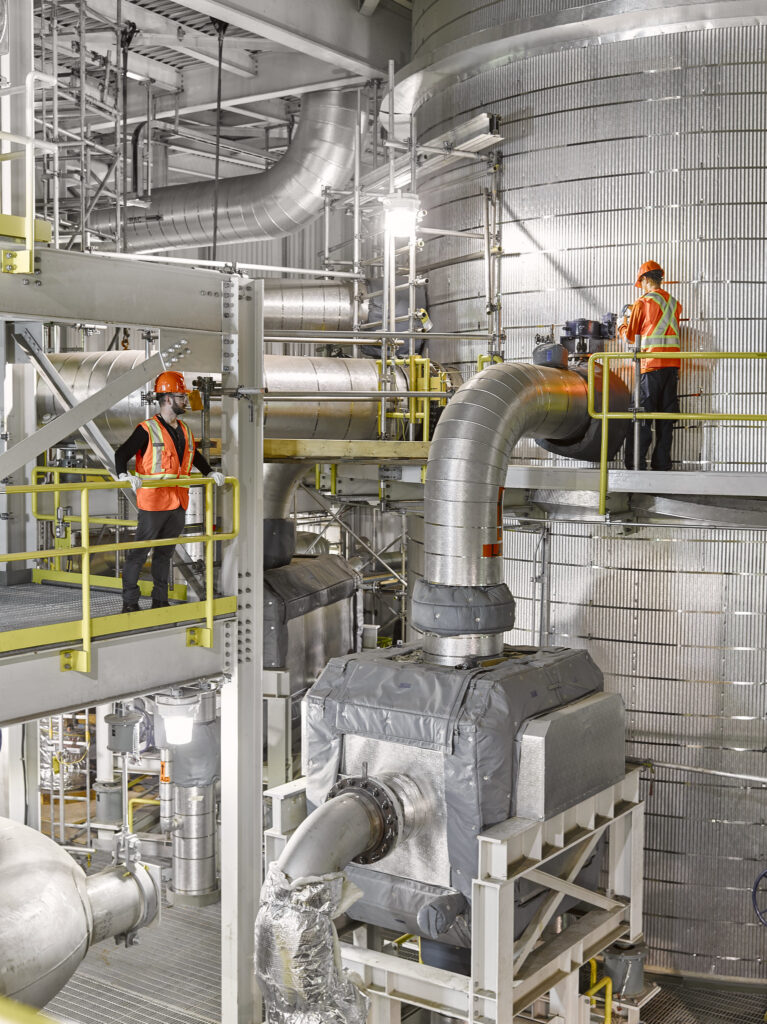
The internal documents obtained by the House Committee suggest that Big Oil views carbon capture technologies as a way to continue producing oil and gas for decades to come, well into an increasingly climate-constrained future. Prolonged oil and gas production is at odds with recent reports confirming that new fossil fuel development is incompatible with the global goal of limiting warming to 1.5°C and with the net-zero energy transition. Yet in public-facing materials from investor presentations to company websites, oil and gas companies reject this consensus — and claim that fossil fuels can remain viable and become “cleaner” with the help of carbon capture and storage.
Recent federal legislation has provided a massive boost to carbon capture technologies, including direct air capture machines designed to remove CO2 from the ambient air. The Bipartisan Infrastructure Law, passed in November 2021, included more than $12 billion in carbon capture investments, and the Inflation Reduction Act (IRA), passed last August, significantly expanded the 45Q federal tax credit for carbon capture: raising its value, lowering the minimum capture requirement for qualifying facilities, and extending the window for projects to claim the credits.
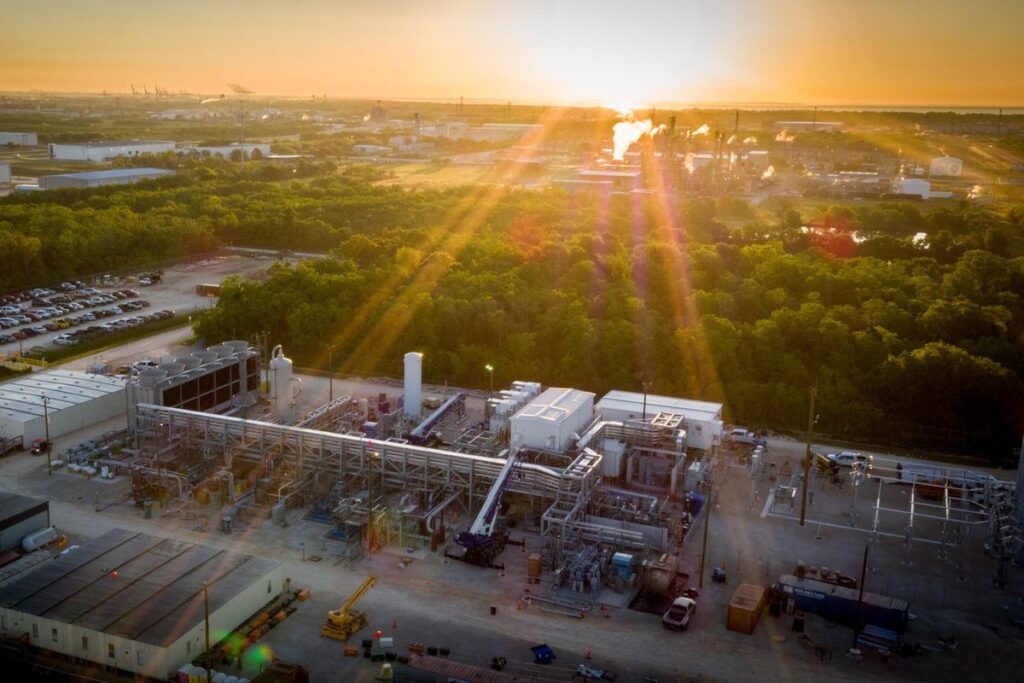
There is mounting evidence, however, that CCS is ineffective. Numerous projects have failed or underperformed. Some studies indicate the technology does little to reduce emissions, and may even increase carbon and other air pollution. Climate and environmental justice organizations, some climate and energy experts, and some lawmakers, are speaking out against the false promise of CCS. And in the wake of the IRA’s passage, the business partners who started the first private CCS company in the United States wrote an op-ed in The New York Times condemning the technology and the billions of federal dollars propping it up. They argue that CCS is inefficient, underperforming, and enormously expensive, while facilitating further fossil fuel development — especially when the captured carbon is used to extract more oil and gas.
But CCS’s critics aren’t the only ones acknowledging the technology’s shortcomings. The subpoenaed documents obtained by the House Oversight Committee reveal that Big Oil is well aware of CCS’s limitations — and its potential as a lifeline for fossil fuels.
A DeSmog analysis of the documents released by the Committee has found that internal communications from BP, Shell, ExxonMobil, and the American Petroleum Institute include statements that CCS enables or prolongs the use of fossil fuels in the energy transition, acknowledgements of the challenges or limitations of CCS, and references to the need for federal funding or policy support for CCS and the industry’s role in securing that assistance.
The following examines a limited slice of what BP, Shell, Exxon, and API have been privately saying about carbon capture since 2016.
CCS Is a Way to “Enable the Full Use of Fossil Fuels Across the Energy Transition and Beyond”
In internal documents, BP, Shell, and the American Petroleum Institute all identified carbon capture as a way to extend society’s use of fossil fuels.
For BP, an important part of this strategy appears to be leveraging its academic partnerships, including Princeton’s Carbon Mitigation Initiative, which the company has directly funded and sponsored since its inception in 2000. Carbon capture and storage is one of the initiative’s major focus areas.
An April 2016 briefing document titled “Princeton Carbon Mitigation Initiative (CMI)” outlines recommendations, as summarized by former BP executive Lamar McKay, from the university initiative to BP executives on climate change and the energy transition. One of the key messages on CCS is that it “creates the option of low-carbon fossil fuel energy.” Included in the recommendations for the oil industry is a statement explicitly acknowledging that CCS allows fossil fuel production to continue. It says that oil companies, as they engage with policymakers, should “Understand the potential for CCS to enable the full use of fossil fuels across the energy transition and beyond.”
Stephen Pascala, director of Princeton’s Carbon Mitigation Initiative, recognized the concern about extending the fossil fuel era. “Gas with CCS has all the problems of an extractive industry perpetuated,” he told DeSmog. But he said that building an energy system based entirely on renewable energy would require a backup power source, adding that batteries are not yet advanced enough and that the three options are nuclear energy, fossil gas with CCS, and hydrogen. “The statement that I want a 100% renewable energy system is not sufficient. You need to have an answer for what to do when the wind doesn’t blow and the sun doesn’t shine,” he said.
In a February 2016 internal position paper on climate change, BP lists CCS among major options for limiting emissions, alongside improving agriculture, cutting coal consumption, and ramping up fossil gas. In a revealing statement, the oil major writes that CCS “could enable continued large-scale use of fossil fuels in a tightly carbon-limited world but faces substantial technology, commercial and logistical challenges.” This acknowledgement substantiates critics’ concerns about the technology, including its legitimization of fossil fuels and its very real constraints.
In response to a request for comment regarding these concerns, a BP spokesperson referenced statements the company has made about CCS on its website, including that “CCS is necessary to help achieve the goals of the Paris Agreement” and “We believe CCS can play a key role to help hard-to-abate industries decarbonize and transition.”
Another document furthers those concerns. In it, BP notes that it played a leading role in an influential 2019 carbon capture study from the National Petroleum Council, a government advisory committee that represents industry views to the Department of Energy. A draft synthesis of findings from that study indicated that carbon capture technology allows for “increased usage of existing US fossil fuel resources, protecting state and federal revenue sources and supporting the license to operate.” Furthermore, it suggested the process could bring “major benefits” including “supporting an increase in US domestic crude production.”
John Noël, senior climate campaigner with Greenpeace USA, expressed skepticism about BP’s intentions. “For [BP], it’s all about maintaining fossil fuel production forever, and CCS is just a route to make that happen,” he said. “This next chapter of the strategy is to use CCS to prolong business-as-usual.”
Shell has taken a similar stance as BP on the issue. In a November 2017 document marked “confidential,” Shell discusses the CCS opportunity in the U.S. Gulf Coast and seems to admit that its interest is centered on boosting the company’s fossil fuel products and reputation — not lessening climate change: “The value of CCS to Shell is the ability to decarbonize our products, retain a larger market share for our products in the energy transition, in addition to reputational value.”
Industry critics point to statements like this as support for their argument that CCS is a false climate solution which won’t actually lead to the needed decrease in burning fossil fuels. “There it is plain as day, we can pretend to decarbonize our products, which they never will,” said Kert Davies, founder and director of the Climate Investigations Center.
Internal documents from the U.S. oil and gas industry’s chief lobbying group, the American Petroleum Institute, further corroborate Davies’ views that CCS is effectively a tool to prop up oil and gas production even as the world lumbers toward more climate-conscious energy systems.
In a March 25, 2021, email announcing the lobby group’s new Climate Action Framework, API senior policy advisor Jeffrey Stein reveals a driving force behind it: “so many of the issues that will guide API’s work on climate policymaking are related to the continued promotion of natural gas in a carbon constrained economy – hydrogen, low-carbon electricity generation, and differentiated natural gas are some examples.”
API’s Climate Action Framework outlines the group’s preferred points of climate policy, including carbon capture projects akin to Exxon’s at Shute Creek, and Stein’s email clarifies that the industry’s climate priorities aim to keep positioning fossil gas as essential to the energy transition and climate action. But this gas-as-a-guiding-star underpinning doesn’t appear in the framework itself, a point not lost on Democratic lawmakers.
“API’s publicly released Climate Action Framework does not state that it is intended to promote natural gas,” explains a December 9, 2022 memorandum from the House Oversight Committee, a document which discusses key insights from its investigation and the subpoenaed documents.
“API’s inconsistent internal and external messaging is common in the oil and gas industry,” the memo continues, “which advocates for government financial support for carbon capture technologies as a climate mitigation initiative—without public acknowledgement that the support entrenches reliance on fossil fuels, thereby directly benefiting the companies’ business-as-usual operation and delaying the transition to clean energy.”
In early 2021, API produced a draft one-pager on CCS as part of an internal review of the lobby group’s position and initiatives on climate change. Notably, the one-pager acknowledges that CCS “enables the use of petroleum and natural gas by providing an opportunity to capture and/or offset emissions, while also offering the opportunity to lower the carbon profile of oil and natural gas production through [enhanced oil recovery].”

In response to a request for comment, API did not address the concern that carbon capture serves as a lifeline for oil and gas, and instead argued that it is important for emissions reduction. “Carbon capture, use, and storage is considered to be critical to meeting any meaningful emission reduction goals, especially in hard-to-decarbonize sectors like cement and steel. As our industry advances emissions reduction efforts, API will continue to work with policymakers in support of initiatives that can accelerate the widescale deployment of these technologies,” API Director of Climate & ESG Policy Jennifer Stewart told DeSmog in an emailed statement.
Another clear takeaway from the subpoenaed documents is that oil and gas companies view CCS as a crucial part of bolstering their social license to operate — that is, the broad public acceptance of their standard business practices. In another internal document that outlines Shell’s business objectives on the energy transition, the company reveals one of its “strategic ambitions” is maintaining a strong social license. Shell says part of that goal means it “must also continue to make the case for our oil, gas, and chemical products, helping to reveal how essential they are to modern life,” and that technologies like carbon capture are “complimentary [sic] approaches” to its traditional business strategy. The oil major further emphasizes that its reputation is important, calling it a “valuable, intangible asset.”
Big Oil Knows CCS Is “Costly, Complex” and Has “Substantial” Challenges
But despite being boosters for carbon capture in public, these companies harbor private concerns about the technology’s cost and viability, as revealed in documents from BP, ExxonMobil, and Shell made public by the House Oversight Committee.
A glimpse of this internal apprehension comes from an undated internal BP document titled “GoM Possible Hot Topics and Issues,” which provides background information and outlines the company’s position and involvement in various energy and policy issues.
While claiming in the document that these technologies are “proven, reliable” and that fast-tracking deployment is “essential,” BP also explicitly recognizes carbon capture’s shortcomings. “Further advances in CO2 capture technology are needed to compete with continued advancements being made in renewable energy sources and energy storage,” the document says, revealing industry concerns about how the technology compares with cheaper renewable energy.
BP also explains that scaling up CCS will depend on “targeted policy support to achieve further cost reductions” — an indication that, as critics have noted, the technology is too costly to scale without dedicated government support such as tax subsidies. In the document, BP also acknowledges — without refuting — that “societal concerns,” including “extending the use of fossil fuels, and the potential risk for CO2 leakage,” present a challenge, too.
The oil major’s “Princeton Carbon Mitigation Initiative” document from April 2016 also concedes that CCS is not faring as well as renewable energy, noting that wind, solar, and vehicle fuel efficiency are taking off while carbon capture, hydrogen, and nuclear power are “faltering.” Furthermore, the National Petroleum Council CCS study draft notes the challenges and obstacles to wider deployment, such as high costs, insufficient incentives, and underdeveloped infrastructure.

Documents from Exxon reveal the oil major has been all too aware of CCS’s high cost and inefficiency. In the company’s draft 2018 “Outlook for Energy: A View to 2040” report, typed notes below a page on “low emissions electricity from carbon capture and storage,” touts Exxon’s leadership in CCS, but adds that “we know the process is complex, costly, and requires additional power (up to 20%) to capture the CO2.” Exxon did not respond to a request for comment on its acknowledgement of carbon capture’s challenges.
Internal communications reveal that Shell too has been cognizant of the significant challenges of scaling up carbon capture. The confidential 2017 document on Gulf Coast opportunities for CSS contains particularly telling statements. In it, Shell acknowledges up front that CCS was nowhere near competitive or cost-effective levels of deployment, noting: “The window for CCS to remain relevant with governments and society is closing quickly.”
This suggests that CCS is far from being implemented as an effective climate mitigation strategy, and that even if it did work more effectively — without the cost overruns and other substantial challenges — it would still not be operating at any large-enough scale to make a meaningful dent in reducing carbon pollution on the short timeframe to avoid the most catastrophic climate impacts.
“We’ve been hearing for 30 years this big promise of scaling up CCS and of it being commercially viable, but it’s not happened. Instead it’s very expensive and untested,” Pascoe Sabido, researcher and campaigner with Corporate Europe Observatory, said during a recent webinar.
CCS Isn’t Viable Without “Additional Incentives” from the Government
The House Oversight documents further reveal that the fossil fuel industry is looking increasingly to the government for help with carbon capture’s hefty price tag.
In one internal document, for example, API mentions that the group endorses government policy reforms and funding to support CCS deployment. It further reveals that API’s policy position is to advocate for CCS research and development and infrastructure permitting reforms. According to the document, “API also supports federal tax provisions incentivizing CCUS investment and deployment.”
While it is no secret that the oil and gas industry publicly advocates for carbon capture to the federal government, the internal communication here illuminates the industry’s motivation in this advocacy, saying once again that CCS is the key to continue selling its polluting products. “CCUS is not an oil-and-gas specific technology but enables the use of petroleum and natural gas,” notes this document, “while also offering the opportunity to lower the carbon profile oil and gas production [sic] through CO2-EOR.”

Confidential notes dated September 25, 2017, from an internal meeting of BP’s “Issues Management Working Group,” reveal suggestions that the company “be more specific where possible about our policy asks: e.g. government support for demonstration, dedicated CCUS policy support” and that it tout the “economic benefits of CCUS (e.g. jobs).” This indicates that securing government support for carbon capture represents an important priority for BP and other oil companies. However, such support may not be in the public interest. According to a 2021 Government Accountability Office study, the U.S. Department of Energy spent more than $1 billion on carbon capture demonstration projects since 2009 with “varying levels of success” — eight out of the 11 projects, most of them coal plants, ultimately failed.
Internal communications from Exxon reveal that its representatives met with and actively engaged government officials around carbon capture policies and funding. Company emails dated May 22, 2019, with the subject line “Federal CCS funding, primarily at DOE” indicate that Exxon discussed and made efforts to secure government funding for CCS, particularly at the U.S. Department of Energy (DOE). This included meeting with DOE staff and exploring the potential to collaborate on federal research projects, for example.
The internal documents obtained by the House Oversight Committee further disclose that Shell lobbied for CCS policies and tax credits, and admitted that additional incentives would be necessary to enable widespread deployment of the technology.
A 2019 Shell executive committee document on the company’s U.S. Energy Transition Program included a subsection on carbon capture under a section titled “Challenges and Uncertainties.” Here, Shell points out that “US CCUS has economic challenges.” The company said it was participating in the National Petroleum Council’s 2019 carbon capture report, which would conclude that the 45Q tax credit for carbon sequestration — which now has been expanded by the Inflation Reduction Act — “alone is not sufficient for the US to be a leader in CCUS without additional incentives.”
This admission seems to recognize that the technology makes little economic sense, at least without further financial carrots such as a carbon price.
That same document also shows carbon capture as a key focus of Shell’s policy advocacy in the United States, with the company working to facilitate a regulatory environment that would support large-scale carbon capture projects: “In order to use the 45Q tax credits, detailed implementing federal regulations must be resolved. Our efforts are focused on the detailed regulatory structures and rules necessary to underpin commercially and technically viable CCS projects.”
As revealed in company emails, financial and reputational concerns played into Shell’s internal deliberations over signing onto an ExxonMobil-led coalition backing a proposed $100 billion carbon capture hub in the Houston Ship Channel in Texas. Such a project, according to a Shell employee’s summary of a conversation with Exxon, “is entirely dependent on getting dramatically expanded 45Q and congressional instruction to DOI [Department of Interior] to design regulations for offshore sequestration.” Both of these policy supports have now become law with the passage of the Inflation Reduction Act and the Bipartisan Infrastructure Law.
Furthermore, the internal emails reveal that Shell was particularly concerned about publicly associating with Exxon. In one email, Shell executive Gretchen Watkins wrote that Exxon’s “reputation is severely damaged here.”
Shell also apparently thought the company needed to be cautious about the optics of its position when publicly speaking about CCS.
In an email to a colleague, dated October 24, 2019, a Shell official offered strategy on talking points as well as messages to avoid at an upcoming “Alliance of Champions” workshop on carbon capture that Shell was co-sponsoring in D.C. “We want to be careful to not talk about CCUS as prolonging the life of oil, gas or fossil fuels writ large. We want to proceed carefully in any conversation about expanding 45Q credits or getting government to pay for CCUS,” wrote government relations advisor Marnie Funk.
Shell did not respond to a request for comment.
Of course, the Inflation Reduction Act significantly expanded the 45Q tax credits. But before the industry secured this subsidy, Shell appeared to want to downplay its advocacy for these incentives, based on Funk’s caution in her 2019 email, according to Greenpeace’s Noël. “If they were being truthful, they fear it would jeopardize their efforts to get expanded credits paid for by the taxpayers,” he said.
Carolyn Raffensperger, executive director of the Science and Environmental Health Network, said the considerable public funding flowing into CCS is especially egregious.
“Carbon capture and storage is the latest grift of the fossil fuel industry. Not only will it perpetuate the fossil fuel industry long past its expiration date and delay real climate solutions, the public gets to pay for it. This means we, the public, pay the polluter rather than the polluter paying for its own messes,” she said. “They are trashing the planet at our expense. They knew it was a grift and now we do too.”
The “Pathway to Forever Producing Fossil Fuels”
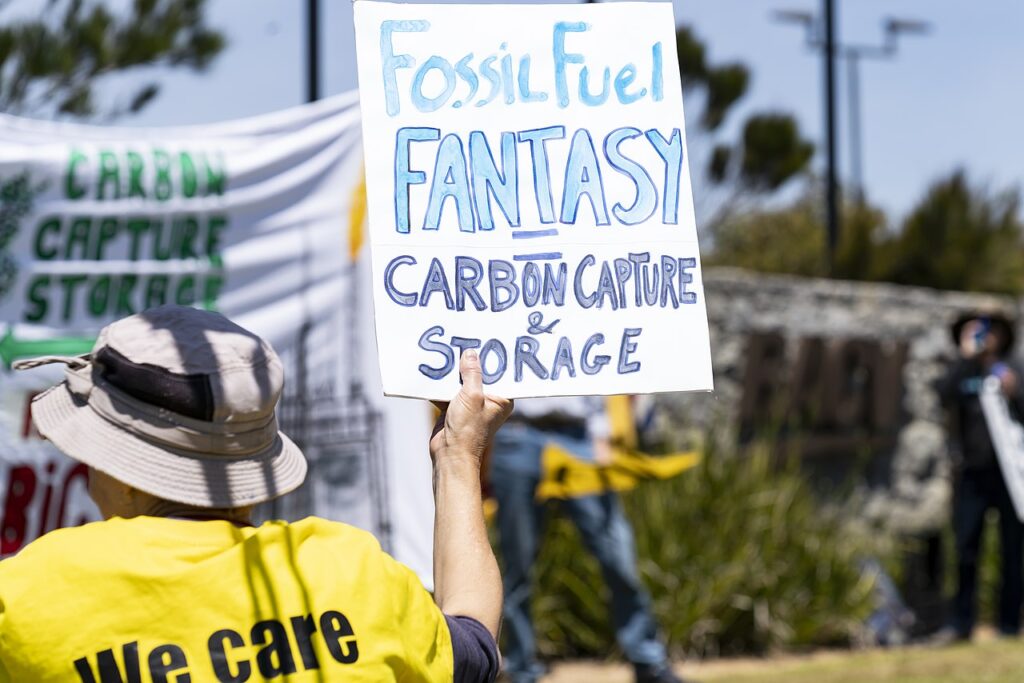
For years, critics have been saying that carbon capture and storage is a key part of the oil and gas industry’s strategy to remain relevant and maintain its social license during a time of energy transition and mounting public condemnation of its ongoing role in the climate crisis.
As Food and Water Watch’s Mark Schlosberg and Peter Hart wrote in July 2021: “The reason that the oil and gas industry loves carbon capture is simple: It extends the fossil fuel era instead of ending it.” CCS critics also point to the high costs of the technology’s operations and the industry’s push to make governments and taxpayers bear the costs despite underperforming projects. The subpoenaed documents from the House Oversight Committee’s investigation confirm that major oil companies are saying some of the same things behind closed doors.
But the industry can’t make CCS happen without securing government funding, as their internal communications show, and the U.S. government is taking the bait. “The industry wants to see so much government funding for CCS locked in that there’s no choice but to continue down that path. And the purpose is clear: enabling the continued burning of fossil fuels,” climate journalist Amy Westervelt wrote in The Intercept.
Noël said the subpoenaed communications reveal what an obvious lifeline carbon capture technologies represent for the fossil fuel industry. “The internal documents suggest that oil companies know that it is their pathway to forever producing fossil fuels, but they don’t want that known publicly,” he said.
“We know the oil industry has a history of deception, and it shouldn’t surprise anyone what is being said about CCS,” Noël added. “What is surprising is there is no adequate response from CCS boosters to what is being said in these documents.”
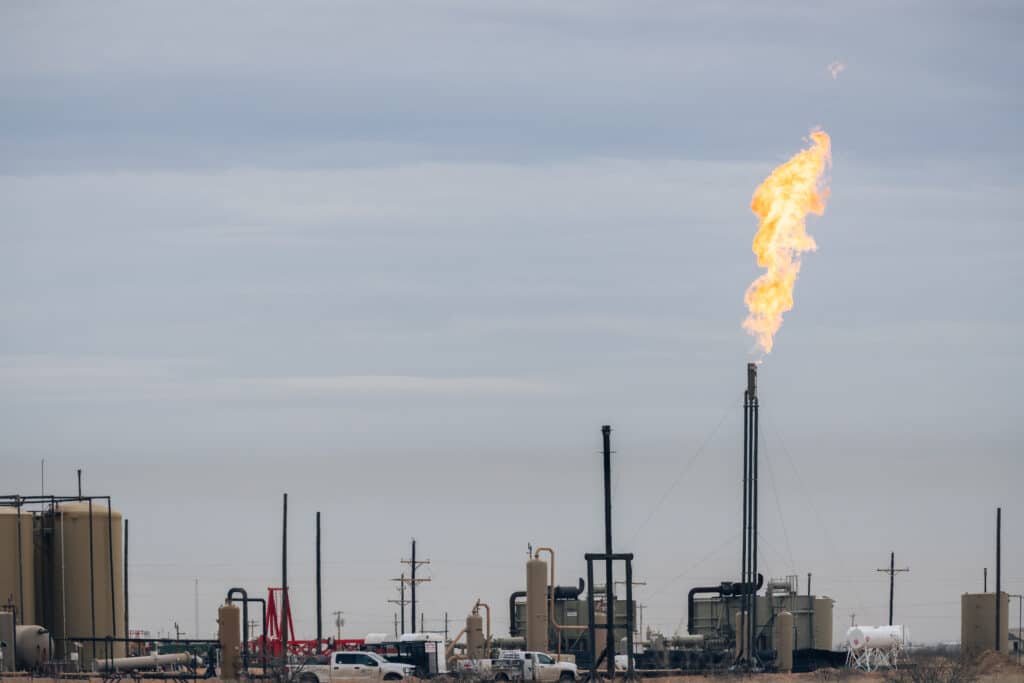
DeSmog reached out to the Clean Air Task Force (CATF), one of the environmental organizations that fervently promotes CCS, about its support, given the oil company revelations.
“CATF listens to the IPCC, not fossil fuel companies, when identifying climate threats and solutions. The IPCC has found that we’re going to need carbon capture, alongside other solutions like renewable energy and nuclear energy, to fully decarbonize the energy system and address climate change. That means we need to put the policies and practices in place that will help deploy carbon capture today, just the same way we need policies to deploy renewable energy and other climate solutions,” Ben Longstreth, Clean Air Task Force’s global director, carbon capture, said in an emailed statement.
Some, however, argue that what the UN’s panel of climate scientists actually says about carbon capture technologies in its latest scientific assessment is more complex and nuanced, with many caveats acknowledging CCS’s high costs and limitations. Deploying carbon capture at a large-enough scale to matter to the climate may not be economically or technologically feasible.
Former Exxon CEO Lee Raymond suggested as much, speaking in 2007 at a National Petroleum Council event: “If you tried to inject all the supercritical CO2 that came from all the coal-fired power plants, you end up moving more and [sp?] liquids than the oil and gas industry moves today, just for CO2. So it is a huge, huge undertaking,” he said, according to an E&E News transcript, noting that the technology had never been demonstrated at scale. “You can’t assume that’s going to happen. And the cost is going to be very, very significant.”
Subscribe to our newsletter
Stay up to date with DeSmog news and alerts


